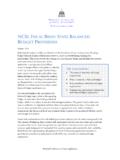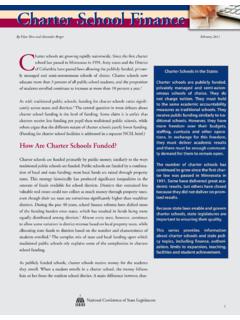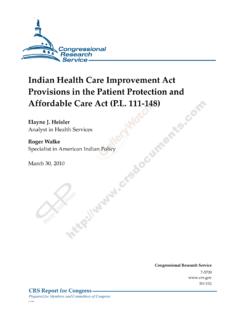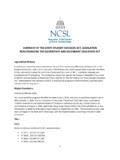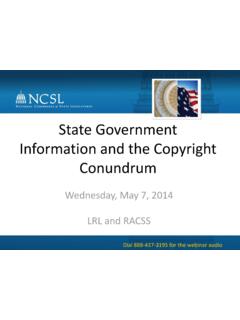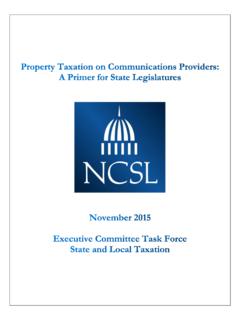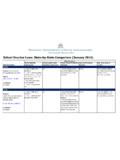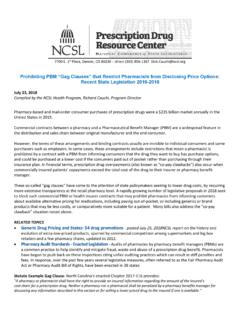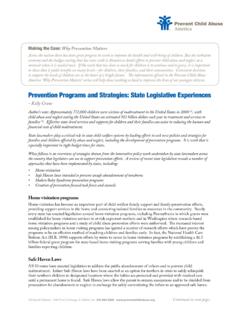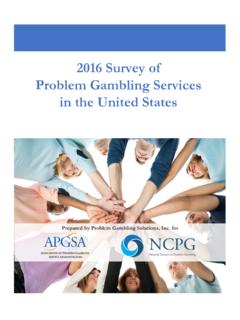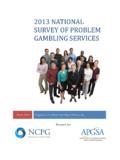Transcription of State Funding for Higher Education in FY 2009 and …
1 State Funding for Higher Education in FY 2009 and FY 2010 NCSL Fiscal Affairs Program The recession that began in late 2007 has taken a brutal toll on State revenues as its impact has deepened and spread across the country. Because states , unlike the federal government, are required to balance their budgets, large revenue shortfalls translated into budget cuts for most State services in fiscal year (FY) 2009 and FY 2010. Funding for Higher Education was particularly hard hit. State Funding for Higher Education is heavily influenced by the states fiscal situation, reflecting a cycle unique to Higher Education .
2 Funding typically takes a disproportionate hit when State fiscal conditions are weak, but experiences more robust increases when State budgets recover. This happens, in part, because State elected officials often view support for Higher Education as more discretionary than Funding for many other programs. The rationale is simple: Colleges and universities can find other sources of income, such as tuition, to compensate for reduced State support. This is not an option available to other State services. As a result, fluctuations in State fiscal conditions often have a greater impact on Higher Education .
3 This point is further illustrated by examining Higher Education Funding developments over the past decade. According to research conducted by the State Higher Education Executive Officers (SHEEO), educational appropriations per full-time student reached a high of $7,961 in FY 2001, followed by four years of decline from FY 2002 to FY 2005 (after the 2001 recession). Per student Funding then increased in fiscal years 2006, 2007 and 2008, recovering to $7,220. In FY 2009, appropriations per student fell by 4 percent due to the onset of the latest recession and declined to $6,928 per student as states struggled with massive revenue shortfalls.
4 Appropriations per student remained lower in FY 2009 (in constant dollars) than in most years since FY The financial woes brought on by global economic weakness have been especially hard on Higher Education institutions, which typically rely on three major Funding streams: State appropriations, school endowments and tuition. In addition to declining appropriations, university endowments have received fewer gifts and experienced massive investment losses. With two of the three major Funding sources down, many State policymakers turned to the only remaining source and raised tuition, thereby increasing the proportion that students and families pay for Higher Education .
5 According to SHEEO, tuition increased 2 percent between FY 2008 and FY 2009 and is now more than 37 percent of total Education revenue. In FY 1984, it was less than 25 1 State Higher Education Executive Officers, State Higher Education Finance FY 2009 (Boulder, CO: SHEEO, 2010), 19. 2 Ibid., 8. 2 national conference of State legislatures At the same time that Higher Education resources are scarce, demand for State -supported Higher Education is growing. With a shortage of jobs and national unemployment rates hovering around 10 percent, more people are opting to continue their Education rather than enter the workforce.
6 In addition, some students who might have previously enrolled in private schools are feeling less secure financially and seeking public Education options. Federal Assistance From ARRA To help stimulate the national economy and aid states , Congress passed the American Recovery and Reinvestment Act (ARRA) in February 2009. Recognizing that State budget cuts could undo much of what the federal government was trying to accomplish, this legislation provided federal funds to the states to help stabilize support for key programs including Higher Education . With the approval of the Secretary of Education , these funds could be used to supplement State and local Funding for Higher Education in fiscal years 2009, 2010 and 2011.
7 In an attempt to prevent the erosion of states commitment to Higher Education , the legislation required states to provide Funding at not less than FY 2006 levels. Falling under that threshold would put a State in jeopardy of losing federal stimulus money. Higher Education Funding in FY 2009 and FY 2010 State support for Higher Education comes mostly from general fund appropriations. Nearly two-thirds of the states also earmark some funds for Higher Education , although these funds represent only about 10 percent to 12 percent of the total. Alabama is the only State that fully funds Higher Education with earmarked funds.
8 Nationally, sources of earmarked funds include lottery and gaming revenues, severance taxes and revenues from land trusts for Higher In late 2009, the national conference of State legislatures (NCSL) surveyed legislative fiscal offices about the status of Higher Education Specifically, it was an attempt to see how Higher Education Funding was faring as a result of the economic downturn and to determine how ARRA funds were affecting Funding levels. The following information summarizes the findings for FY 2009, including the impact of ARRA funds: After several years of Funding increases, Higher Education saw declining State support in FY 2009.
9 Fourteen of the 46 reporting states used ARRA funds, known as State Fiscal Stabilization Funds, to supplement Higher Education budgets in FY 2009. Even so, total State support for Higher Education , including ARRA funds, fell percent in FY 2009 from the year before. Without ARRA funds the decrease would have been percent. Despite the overall decline in FY 2009, 13 states increased Higher Education Funding by 5 percent or more. And two of these states boosted Funding by 10 percent or more. The largest increases were in Wyoming ( percent) and Idaho (11 percent).
10 5 3 For more information, see: Perez, Arturo. Earmarking State Taxes. national conference of State legislatures . September, 2008 ( ) 4 Forty-six states provided information for this report. Those not reporting were Massachusetts, New Jersey, New Mexico and New York. 5 Wyoming has a biennial budget, which can skew year-over-year changes. 3 national conference of State legislatures Six states decreased Higher Education Funding by 5 percent or more compared to the previous year. Four of these states reduced total Funding by 10 percent or more.
